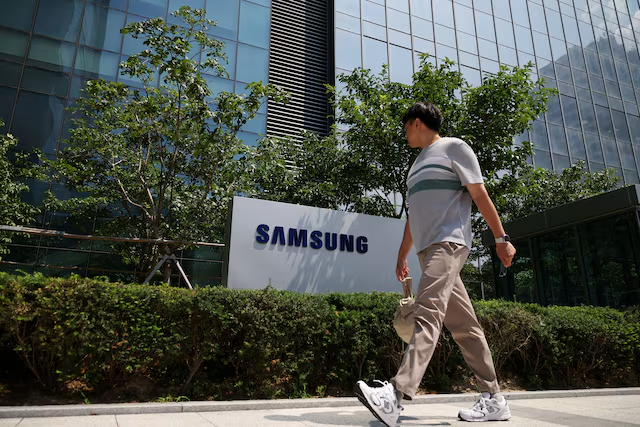Samsung Electronics’ fourth-generation high bandwidth memory (HBM3) chips have been approved by Nvidia for use in its processors for the first time, according to sources familiar with the matter. However, the approval is currently limited to Nvidia’s less sophisticated H20 graphics processing unit (GPU), designed specifically for the Chinese market to comply with U.S. export controls.
It is not yet clear if Nvidia will incorporate Samsung’s HBM3 chips in its other AI processors or if further testing will be required. Additionally, Samsung has not yet met Nvidia’s standards for its fifth-generation HBM3E chips, and testing of these chips is ongoing.
HBM, a type of dynamic random access memory (DRAM) introduced in 2013, features vertically stacked chips to save space and reduce power consumption. This technology is crucial for GPUs used in artificial intelligence, as it helps process large amounts of data from complex applications.
Nvidia’s approval of Samsung’s HBM3 chips comes amid a surge in demand for sophisticated GPUs driven by the generative AI boom, which has left manufacturers like Nvidia struggling to keep up. With only three main producers of HBM—SK Hynix, Micron, and Samsung—and a shortage of HBM3, Nvidia is eager to diversify its supplier base by bringing Samsung up to its standards.
The demand for HBM3 is expected to rise as SK Hynix, the leading manufacturer in the field, plans to increase production of HBM3E and reduce HBM3 output. Samsung, the world’s largest memory chip maker, has been attempting to pass Nvidia’s tests for HBM3 and HBM3E since last year but has faced challenges related to heat and power consumption.
Following reports in May that Samsung failed Nvidia’s tests due to these issues, the company denied the claims. Samsung could start supplying HBM3 for Nvidia’s H20 processor as early as August, according to sources.
The H20 is the most advanced of the three GPUs Nvidia has tailored for the Chinese market following the U.S. tightening of export restrictions in 2023, aimed at hindering supercomputing and AI advancements that could benefit the Chinese military. The H20’s computing power is significantly limited compared to the H100, which is sold in other markets.
Initially, the H20 faced a slow start when deliveries began this year, with its price set below a competing chip from Chinese tech giant Huawei. However, sales have been growing rapidly in recent months.
In contrast to Samsung, SK Hynix has been a primary supplier of HBM chips to Nvidia, providing HBM3 since June 2022 and starting HBM3E shipments in late March. These shipments have reportedly gone to Nvidia.
Samsung’s ongoing efforts to meet Nvidia’s standards for HBM3 and HBM3E are crucial as the demand for advanced AI processors continues to escalate, highlighting the competitive landscape in the semiconductor industry.
READ MORE:
